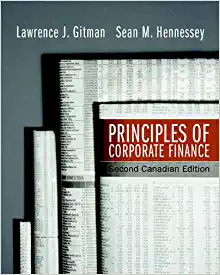Question
Use the information provided to forecast the earnings and expenses associated with the Sources and Uses of the bank funds for each category in the
Use the information provided to forecast the earnings and expenses associated with the Sources and Uses of the bank funds for each category in the order listed and then answer the questions asked.See worksheet provided on separate sheet. Current Treasury Bill rate is 1.5%. Be sure to consider that bad debt would not be expected to earn interest.
DATA: Dollar Amount
Source of Funds(in millions)Rate
Demand Deposits$5,0000%
Time Deposits$2,0002%
1-year NCD$3,000T-bill + 1.5%
5-year NCD$2,5001-year NCD + 1%
Money Market$2,500T-bill - 1%
Total Liabilities$15,000
Use of FundsLoan Loss
Cash$1,800
Small Bus. Loans$4,000T-bill + 3%1.5%
Lg Bus. Loans$3,000T-bill + 1.5%1.0%
Consumer Loans$3,000T-bill + 4%2.5%
Treasury Bills$1,000T-bill rate0%
Treasury Bonds$1,500T-bill rate + 2%0%
Corporate Bonds$1,000T-bond rate + 2%0%
Fixed Assets$700
Total Assets$16,000
Non-Interest Revenue$300
Non-Interest Expense$400
Tax rate34%
Difference between Assets and Liabilities must be Equity (Capital).
Current T-bill Rate 1.5%
Source of Funds
Dollar Amount
(in millions)
Relevant Interest Rate
Expected Expenses
Demand deposits
$5,000
Time deposits
$2,000
1-year NCDs
$3,000
5-year NCDs
$2,500
Money Market Borrowings
$2,500
Total Liabilities
$15,000
Use of Funds
LL%
Loan Loss
$ Amt
Funds
Earning Interest
Relevant Interest Rate
Expected Earnings(corrected for LL)
Cash
$1,800
Small business loans
$4,000
Large business loans
$3,000
Consumer loans
$3,000
Treasury bills
$1,000
Treasury bonds
$1,500
Corporate bonds
$1,000
Total investments
$15,300
Income Statement
*DPR: dividend payout ratio (portion of earnings available to common stockholders paid out as dividends), thus 1-DPR = Retention Ratio.
Entry #1
Interest Revenues
Entry #2
Interest Expenses
Entry #3
Non Interest Revenues
Entry #4
Non Interest Expenses
Entry #5
Loan Loss Provision
Entry #6
Income Before Tax
Entry #7
Income tax liability (34%)
Entry #8
Net Income
Entry #9
Cash Dividends (60% DPR)
Entry #10
Retained Earnings (40% RR)
Part 4: interpretive statements related to bank performance as indicated with forecasted balance sheet and income statement. .
- Calculate the Expected ROA and ROE for the bank.[Capital (or Equity) is implied in the data provided.] (worksheet provided to add in creating balance sheet and income statement so as to determine ROE and ROA.)
- Calculate the Primary Liquidity Ratio Position to contrast with an industry average of 10% (Primary is the Vault Cash plus Reserves at the Fed).
- Calculate the total Liquidity Position to contrast with an industry average of 15%. (Total Liquidity Position is the cash position plus the holding of short term US Treasuries. {T-bonds are held as collateral when the bank is designated by the FED as a Tax & Loan Facility for the Treasury, and are not held for liquidity.})
- Calculate the Current Capital Ratio Position (Capital Ratio is the Equity or Capital divided by Total Assets) to contrast with a Basil Expectation of 8% for a risk-ranked institution similar to this one.
Step by Step Solution
There are 3 Steps involved in it
Step: 1

Get Instant Access to Expert-Tailored Solutions
See step-by-step solutions with expert insights and AI powered tools for academic success
Step: 2

Step: 3

Ace Your Homework with AI
Get the answers you need in no time with our AI-driven, step-by-step assistance
Get Started


